

Alphabet books offer a vivid insight into the history of literacy and culture, as well as concepts of childhood. The Children's Book Collection at UCLA contains a rich array of these materials, some well-worn and much-used, some still bright and fresh. Each is a gem of print production and graphical imagery from another time and place. Though the history of alphabet books continues to the present, this exhibit focuses on the works in our collections published between 1700 and 1900, including horn books, primers, works of didacticism and seriousness, whimsy and play.
2. A Jumble ABC
3. A Little Pretty Pocket-Book
4. A New Lottery Book of Birds And Beasts
5. A Pretty Play-Thing for Children of All Denominations
8. ABC of Objects for Home And School
10. ABC with Pictures & Verses
12. Alphabet Et Instruction Pour Les Enfans
16. Dolly's ABC Book
17. Flora's ABC
18. Home ABC
22. Hornbook C. 1700
23. Large Letters for the Little Ones
24. Little ABC Book
25. Little People: An Alphabet
26. Martin's Nursery Battledoor
27. Mother Goose ABC
28. My Darling's ABC
29. Orbis Sensualium Pictus Quadrilinguis
30. People of All Nations: A Useful Toy for Girl Or Boy
31. Picture Alphabet
32. Pretty ABC
33. Railway ABC
34. Rusher's Reading Made Most Easy
38. The Alphabet of Old Friends
40. The Amusing Alphabet for Young Children Beginning To Read
42. The Child's Christian Education
45. The Easter Gift
47. The Favorite Alphabet for the Nursery
49. The Franklin Alphabet And Primer
51. The Golden ABC
55. The Moral And Entertaining Alphabet
57. The Old Testament Alphabet
59. The Picture Alphabet for Little Children
62. The Sunday ABC
63. The Union ABC
64. The Young Child's ABC, Or, First Book
65. Tom Thumb's Alphabet: Picture Baby-Books
67. Warne's Alphabet And Word Book: with Coloured Pictures
68. Wood's Royal Nursery Alphabet
Title The Railroad Alphabet
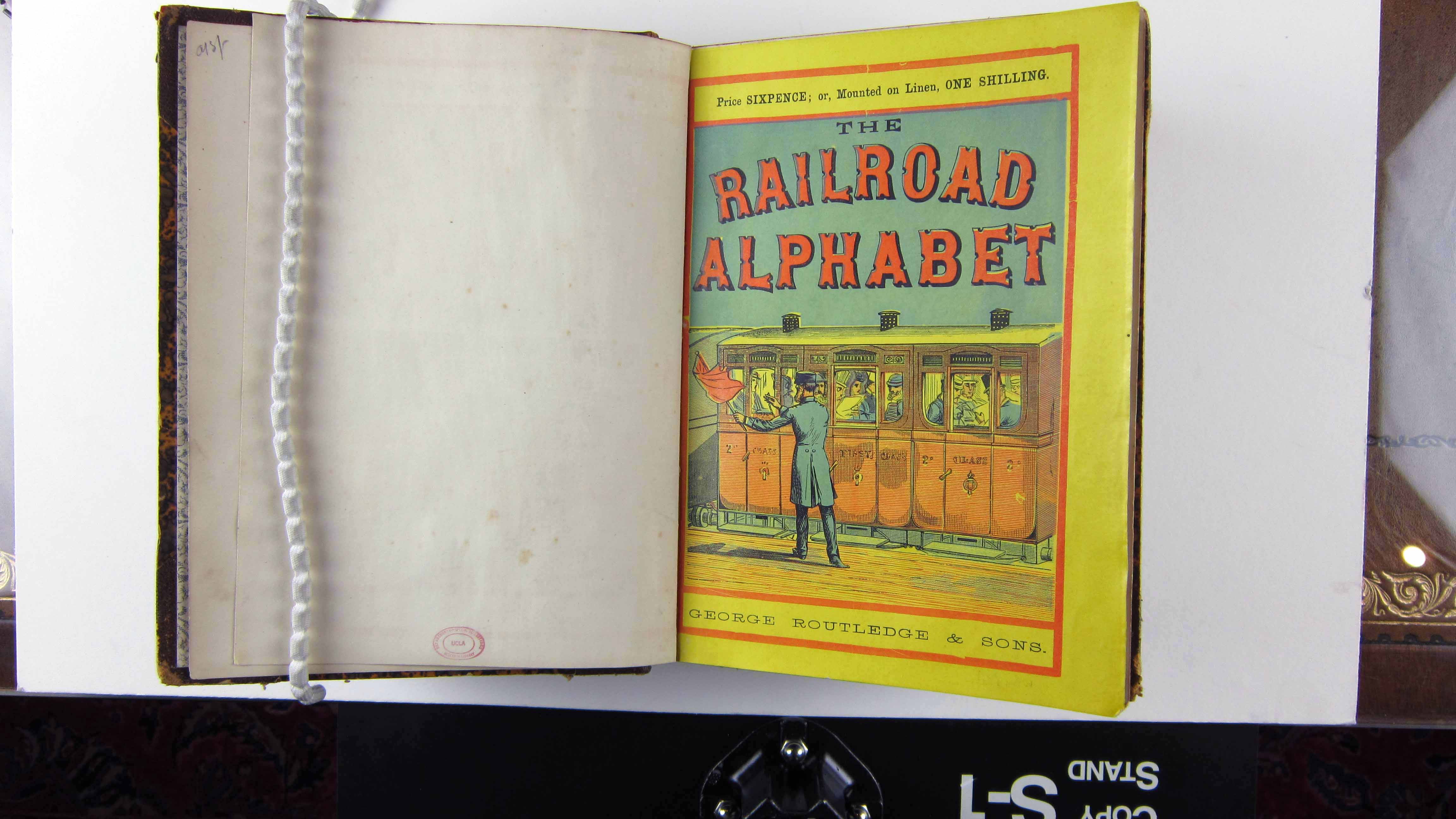
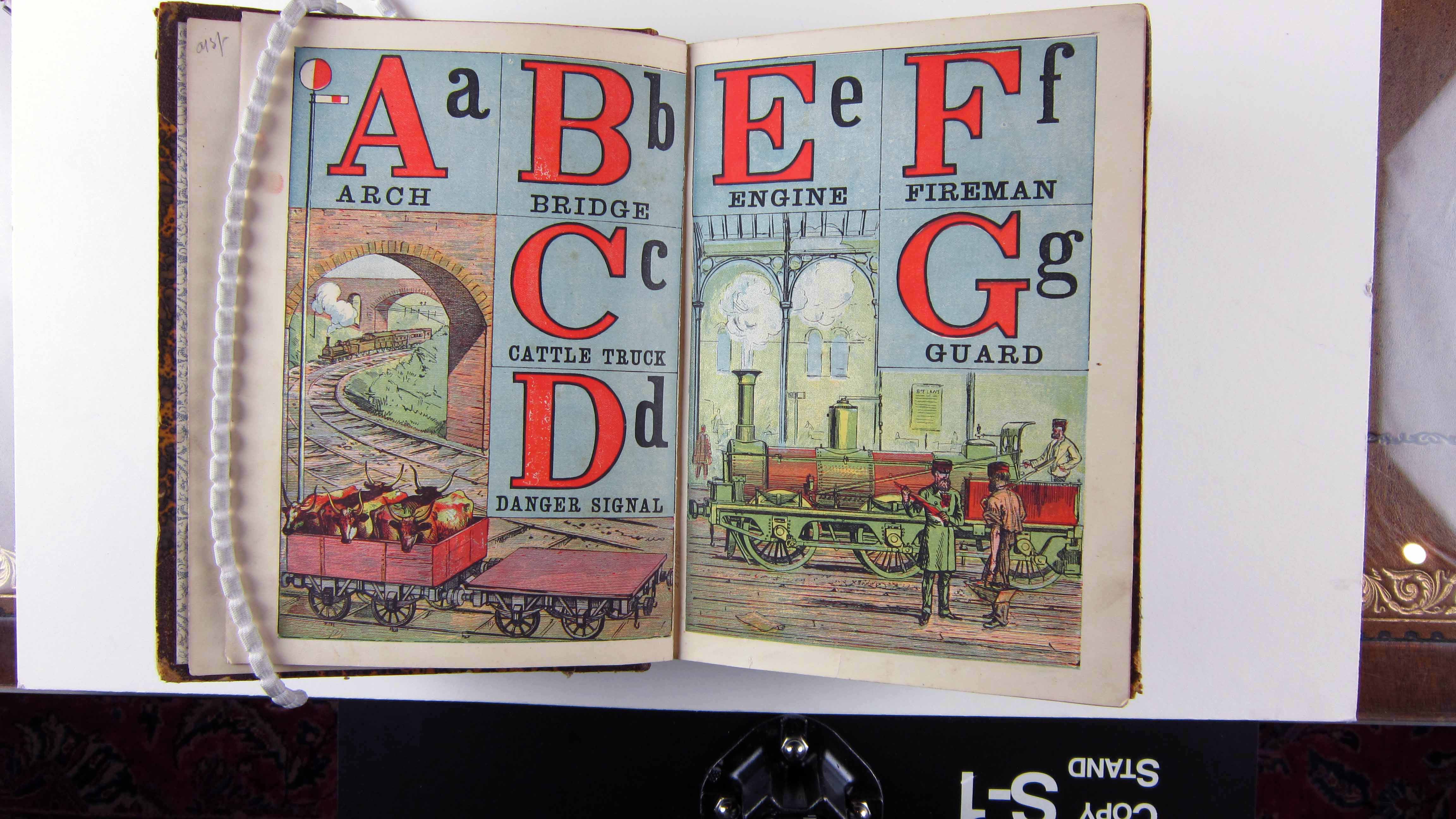

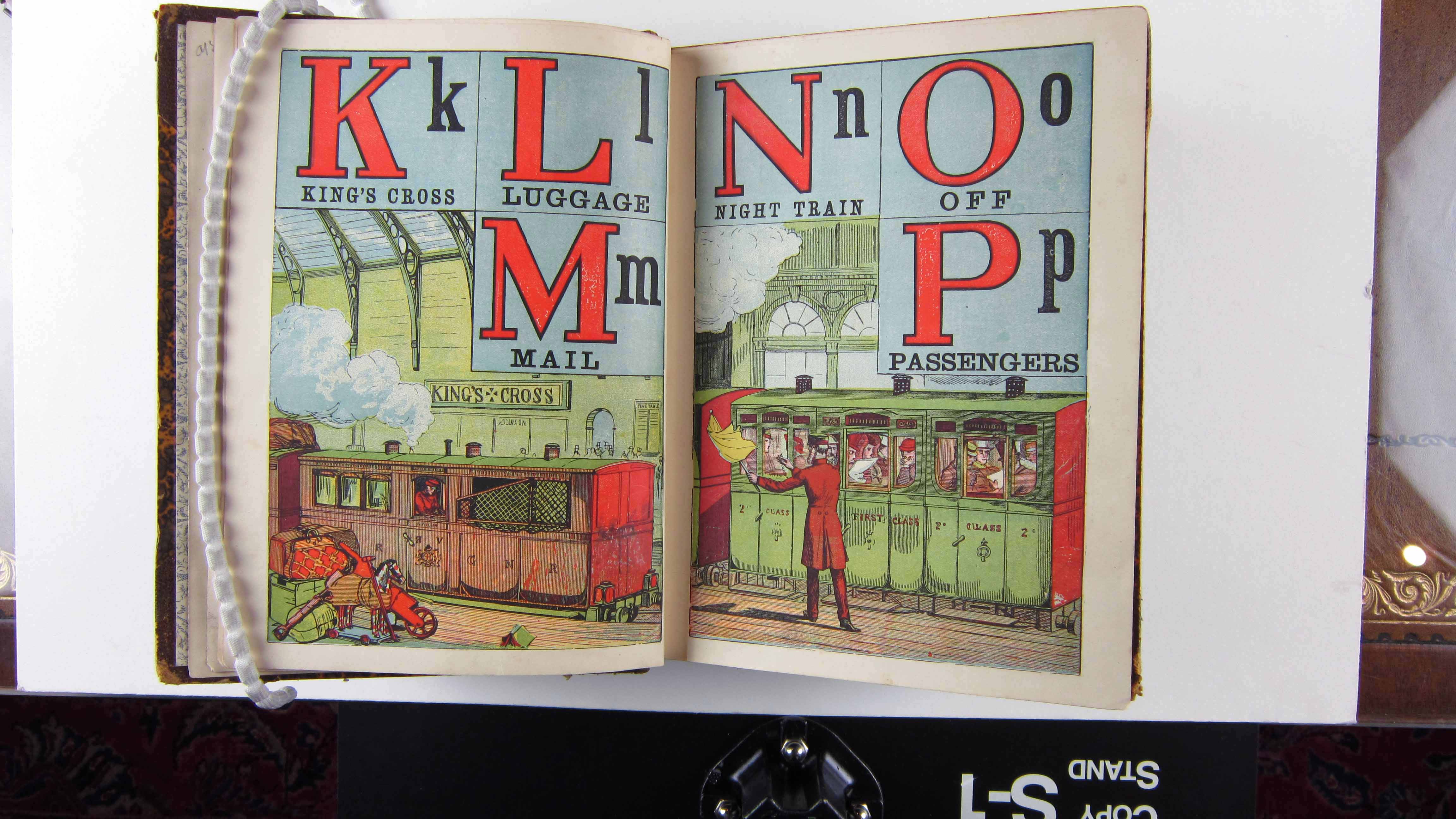
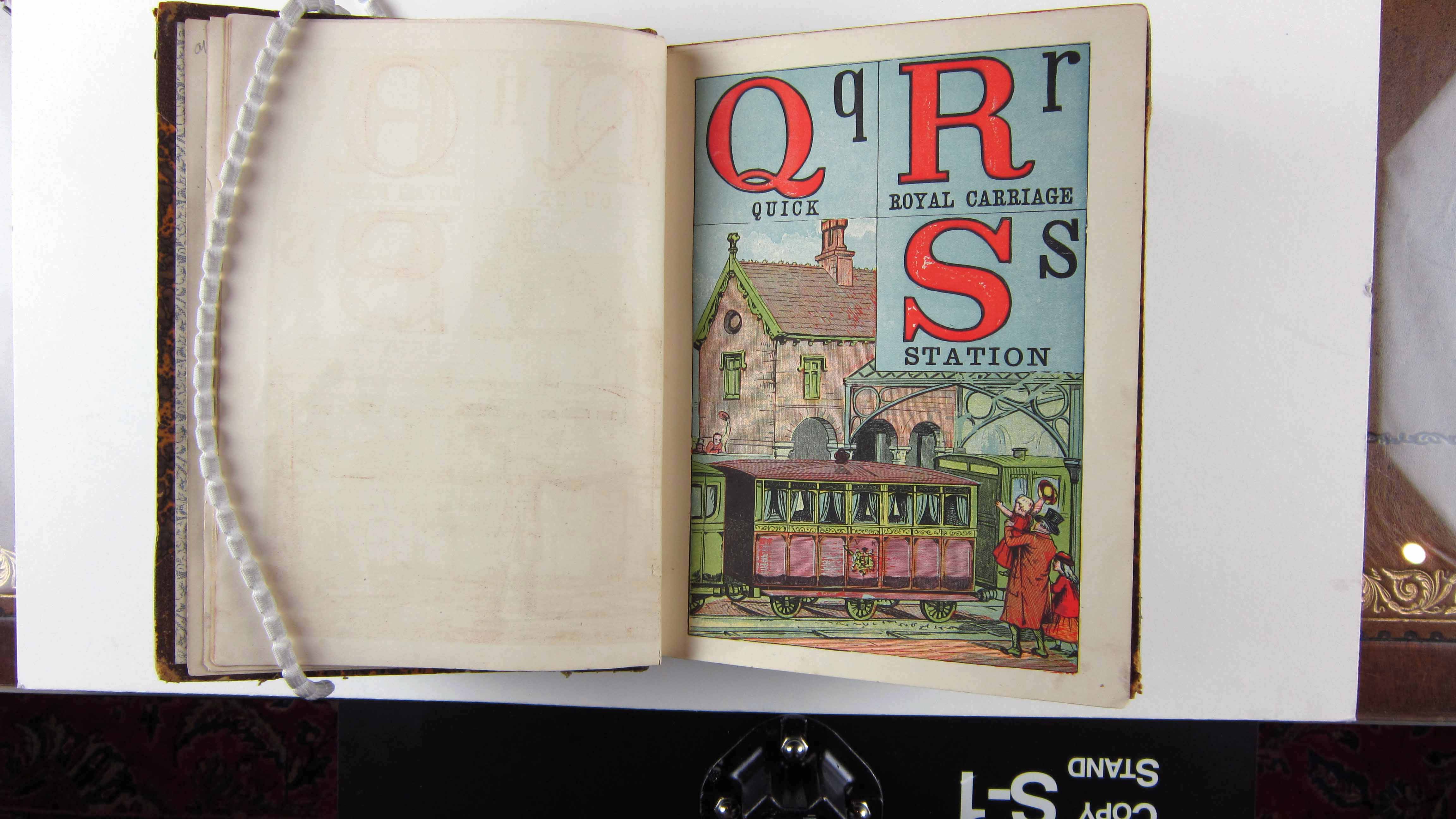
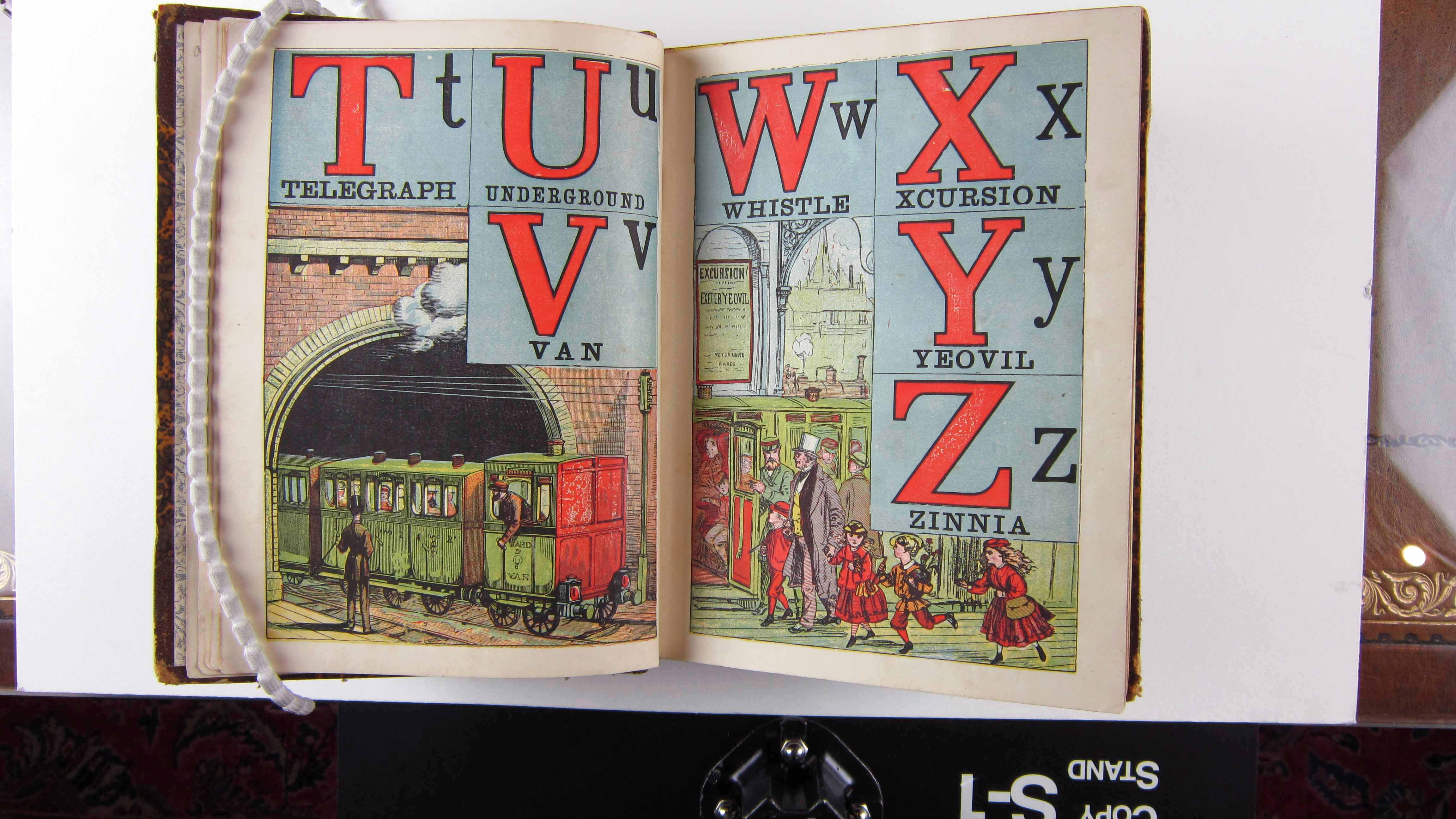
Brief description [8] leaves : col. ill.
Full description This is a book for a reader early in learning the alphabet and letters: it is large, brightly colored, and simple words rather than phrases or rhymes are used to demonstrate each letter. The subjects of the illustrations are clearly captioned. The words chosen are not easy, one-syllable words: "King's Cross" and "Xcursion" are two examples of the complexity of the vocabulary. The pictures are large and the letters are boxed separately on the upper portion of each page, which causes some separation between words and images. As such, the image may represent only one letter of the 3-4 letters included per page. The industrial theme of the book, along with the relatively late nineteenth-century date reflects the railroads that had become prevalent by the time period. Images of occupations associated with the burgeoning industry, as conductors and other railroad employees, can be found throughout the volume.
Literacy The Railroad Alphabet includes words or word phrases in its approach to teaching literacy, rather than simple letters or more complicated rhyming couplets used in other books. This book suggests that literacy could be professionally useful. The illustrations in the railroad alphabet depict train employees in smart uniforms and include the names of stations (such as King's Cross). This may be taken to subtly suggest that literacy would be a necessary skill for conductors and other railroad employees.
Childhood There are few representations of children in The Railroad Alphabet, as the majority of the images focus on aspects of industrial technology. The few instances in which children are present, they are often part of a larger group of passengers and a passive part of the background rather than active participants in a scene. They are well-dressed members of a class wealthy enough to travel by rail, accompanied by a fair-sized pile of luggage that waits alongside the train.
Iconography The Railroad Alphabet emphasizes the industrial changes of the nineteenth century, specifically, travel by railroad. The vocabulary emphasizes this with words like engine, danger signal, junction, night train, and telegraph. The majority of the large, colorful images portray illustrations of trains, usually stopped at a station and pictured with iconic puffs of white smoke and piles of luggage. The scenery tends towards the urban rather than the pastoral, with railroad tracks, brick walls, and arched glass windows. This suggests a world for the comfortably wealthy, with the passengers neatly dressed in expensive clothing of the period, such as top hats.
Production The Railroad Alphabet is the first book in a bound serial. These books were originally individually published and later collected together: both the front and back covers of the railroad alphabet are included. Similarly to The Sunday A.B.C. also in the collection, the book is a sturdy, linen-printed, brightly-colored object with printing on only one side of the sheets. The letters of the alphabet (and the vocabulary words they represent) are integrated into the full-page illustrations, rather than being separated. The printing process is chromolithographic in nature, with a high number of colors applied precisely to each image.
Publisher George Routledge & Sons
Publication place 11 Ludgate Hill, London
Date 1865
UCLA Call Number CBC * PZ8 .C85 1870 v.1
Repository UCLA Charles E. Young Research Library, Dept. of Special Collections
Dimensions 26 cm
Technologies of production Engraving, printing
Caption